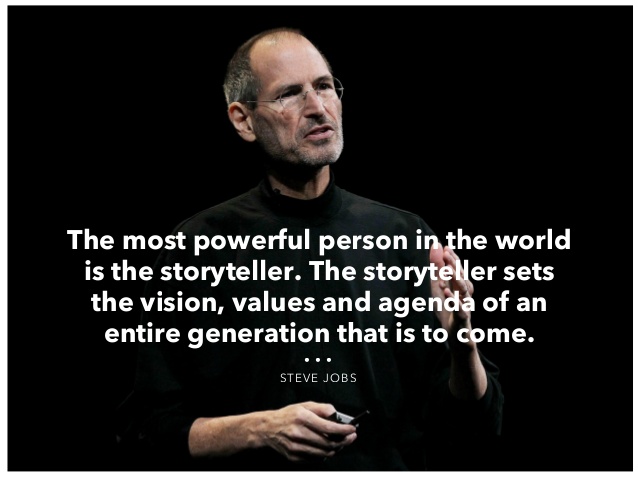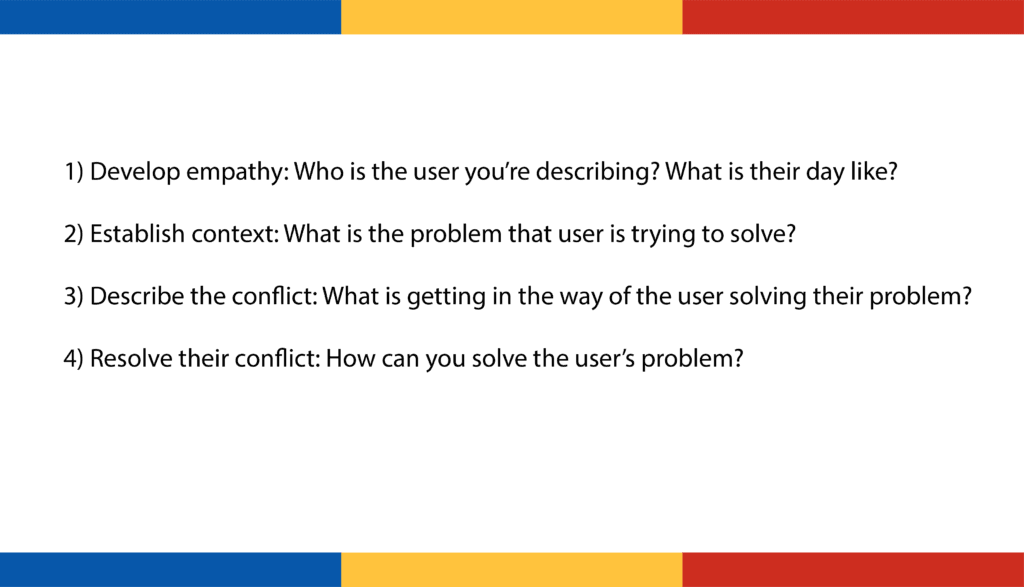Product managers are the ultimate storytellers because storytelling is at the very heart of product development. A well-crafted product story goes the distance in communicating product vision and answering the why and how of bringing a product to life across the organization and throughout the product development process.
Architecting a great product story that makes people care about your roadmap doesn’t happen by chance. Instead, it’s an intentional effort baked into product strategy.
Yes, roadmaps provide a product plan for development. However, don’t miss the opportunity to use roadmaps to tell your product story and connect your team to that story. Here’s how to use a roadmap to tell your product story in a way that sells your product idea, initiatives, and ultimately your product.

What Is a Product Story?
A product story is (and literally) the story of the product. And because PMs know their products better than anyone, they get to do most of the storytelling.
The product story itself becomes the vehicle for communicating the product across the organization—from senior management who need to be persuaded to open the door to a product or feature idea to the people and teams involved in getting that new product or feature to market.But the story doesn’t stop there. It also communicates to customers why they need this product in their lives.
Ellen Merryweather, co-host of the Product Podcast, explains:
“Storytelling is an important and often overlooked part of a Product Manager’s job. … As a product manager, you don’t just have to tell that story to your customers, but also to the teams involved in development, management, and stakeholders.”
What are the two functions of a product story?
The product story has two key functions: to explain the why and the how of a product.
First, it explains the why behind the product—the product vision, which is the overarching long-term mission of a product. The product vision guides everyone involved in a product’s development (e.g., the product team, developers, senior leadership, marketing, etc.) towards the shared objective they’re trying to achieve with a product. Given that, it communicates concisely where the product hopes to go and what it hopes to achieve in the long term.
Merryweather continues:
“Your ‘why’ is what sets you apart from other businesses with similar products, helping customers choose you in the first place and then stay loyal to you. Every good product has a North Star. The trick is translating it in a way that makes sense to your customers.”
A good product story also narrates the how of your product—the product strategy or how you will bring the product to life. A product strategy describes what a business hopes to accomplish with its product and how it plans to do so. Additionally, it answers key questions, like who the product will serve (personas) and how it will benefit them.
Learn 5 steps to creating a winning product strategy.
Data points, insights, and customer problems all have a story to tell. It’s the PM’s job to distill the story that connects people to the product, motivating them to care about it and ultimately take the desired action.

What’s the Importance of a Well-Crafted Product Story?
Framing the right product story makes insights and data meaningful and gives them the power to inform, persuade, connect, and align. In addition, good product stories help stakeholders and team members care about and feel connected to a product.
A well-conceived product story enables a PM to do three key things:
- Simplify the message and filter out unnecessary noise
- Engage people’s emotions and persuade them to care (and ultimately act)
- Make the story memorable
However, the benefits don’t stop there. A well-crafted product story helps PMs:
- Dispel confusion
- Answer questions
- Sell ideas
- Recruit support from management
- Increase understanding in a relatable way
- Improve engagement
- Create alignment
- Motivate developers and engineers to build a great product
- Inspire customers to achieve great things with the product
- Motivate prospects to act
Stories deepen understanding and make an idea more relatable. When a story is relatable, people naturally feel empathy. Consequently, empathy, in turn, makes people care.
Thinking of PMs as storytellers might be a new concept, but an essential part of the PM role is crafting and telling a product story via the product roadmap.
A good product story shapes the way stakeholders and senior leadership read the roadmap. A good story emotionally engages people. People love a good story. People remember a good story.
6 Steps for Telling a Compelling and Well-Crafted Product Story
To benefit from the power of a good story, you’ve got to craft a good story. So keep these 6 steps in mind as you write yours:
Step 1: Answer for why.
Why are we doing this? Why will this solve the user’s problem? Why us? Why now?
Drafting a vision statement is the first step in starting any new product’s journey and the beginning of the product story.
Step 2: Simplify.
A passionate PM is naturally interested in every aspect of a product, but not everything belongs in the product story. Keeping your product story simple is important for engaging people and persuading them to support the product. So don’t let your story get bogged down in unnecessary details that distract from your core message.
Here are some of the questions a good product story should answer:
- Why are we building this great new product?
- What are our unique challenges in bringing this product to market?
- What do we hope to accomplish with the product in the future?
- What’s the impact our product will have on customers?
Step 3: Remember that the hero is the user.
Alex Alexakis, an analyst at Marathon Venture Capital and former PM for high-growth startups, explains:
“At its core, a good story has a hero. Unfortunately, a lot of product people often forget who the hero of their story should be. As a result, often we see decisions about features taken solely based on revenues, metrics, investors’ opinions, competitor moves, etc., thereby neglecting the basic rule of storytelling.”
The user is the hero of your product story. For that reason, developing a deep understanding of the user’s problem and experience helps center the story where it needs to be.
Step 4: Make it relatable.
We connect when stories resonate by tapping into our shared humanity. Therefore, keep this question front and center as you craft your story: Why should anyone care about this?
Anna Marie Clifton, product manager at Coinbase, shared her storytelling strategies with Mind the Product. Here’s Clifton’s framework for crafting a good story:

Framework credit: Effective Storytelling to Motivate and Align Your Team by Anna Marie Clifton
Step 5: Consider your audience.
The way you categorize and present your roadmap depends quite a bit on your audience. Undoubtedly, so does the product story.
To be effective in your product storytelling, you need to customize the story with unique angles for each group or team member (sales, engineering, CS, execs, etc.). Focus on purpose, conflict/problem, action, and how the product solves the problem, all while weaving in an emotional hook catered to a particular audience. If you want people to click, read, and remember what you said, you have to understand their unique perspectives and craft the story around them.
Step 6: Aim to engage.
We’ve all heard great stories that keep us on the edge of our seats. Your product story should be that kind of story. Gripping. Emotionally engaging. Unforgettable.
Shobhit Chugh, the founder at Intentional Product Manager, explains:
“Great stories have inherent conflict. They have some inherent conflict that grips the reader’s emotions.”
Chugh offers these prompts to get started developing a great product story.
Background
- Who do you hope to influence through this story?
- What do you want them to feel?
- What do you want them to do?
Form the Story
- What are the conditions that have to lead to conflict? For example, has the world changed in some way but not in others?
- What is the conflict?
- How can the conflict be resolved?
- What can you/your product do to resolve this conflict?
- Why are you the right person to resolve this conflict?
Polish the Story
- Is your story clear?
- Is there something relatable that you can use to simplify the story? Some sort of metaphor, some analogous story that will make it easier to grasp?
- What would you say if you had half the time and space to tell the story? What will you cut?
PMs are product storytellers, so getting the story right is critical for product success. A well-crafted product story has the power to connect colleagues and stakeholders across the organization with the heart of the product—the why that brings a great product to life.



